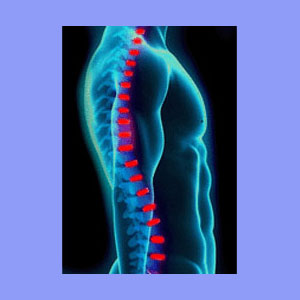
Preventing sciatica is a hopeful wish of many people who have previously been affected by acute or chronic back and leg pain. Many of these poor souls will try anything to prevent their pain from recurring, usually coming up with a variety of activities to perform or avoid.
This list of conditioned behaviors is often irrational and illogical, often relating more to the psychosomatic aspects of the condition than any valid physical concerns. Besides, activity avoidance is rarely overly effective for pain control, but certainly does contribute to an extremely limited lifestyle.
While there are no universal methods of preventing sciatic nerve pain from occurring, there are some strategies which might help many patients. The goal of this article is to discuss preventative measures used to stop pain from flaring up, rather than treating it once it takes a firm hold.
Preventing Sciatica with Exercises
Many patients use sciatica exercises and stretches in order to prevent acute attacks. Exercise will not do anything to counteract the structural effects of spinal arthritis or a herniated disc. Therefore, the theory often cited that exercises will support the spine and prevent disc or arthritis pain is simply ridiculous.
However, we all know that exercise can be effective at minimizing the effects of so many forms of sciatica. This is because exercise enacts increased localized circulation, staving off the effects of regional ischemia temporarily. It should be noted that one of the most common causes of chronic sciatica is indeed oxygen deprivation.
Other patients might rely on a back brace in order to feel protected against future pain. Once again, virtually all varieties of braces will not provide any efficacy form spinal concerns and are only useful for specific muscular issues. In all other cases, benefits imparted certainly come by means of the placebo effect. Unless a brace can counteract any movement in the affected spinal levels or decompress a nerve, then it is a waste of time and money for patients with the most traditional diagnostic culprits.
Sciatica Prevention with Conditioning
Sciatica conditioning plays a major role in many painful complaints. I have heard all sorts of conditioning stories, spanning from the logical to the seemingly insane.
Patients will often notice pain to be worse or relieved with certain postures, activities or events. In some cases, there may be an actual structural reason for this to take place. However, in most instances, the effect is purely coincidental and has no particular significance.
This is something worth remembering if you are one of the many who insist that the pain is worse when sitting in a particular chair, better when sleeping on a particular pillow or miserable on every Tuesday of the month.
Programming is a fascinating part of any chronic pain syndrome and has been studied and written about in great detail, especially in the mindbody medicine sector. There is no denying the effects of a conditioned response on any patient. Therefore, all sciatica sufferers who feel that they have a long list of beneficial and prohibited behaviors relating to their symptoms may have more of a psychoemotional contribution to their pain than they might consciously acknowledge.
Tips on Preventing Sciatica
The point of this article is clear. Sure, do whatever you can to prevent sciatica physically. Eat right, exercise and avoid risky behaviors. However, the epidemic of sciatic nerve pain still exists despite the best efforts of most affected patients.
The best way to prevent pain is simply to understand where it comes from, based on fact and verifiable evidence. When it comes to diagnosis, there should be no speculation or guessing. If there is any doubt as to the nature of a sciatic nerve pain condition, then patients are advised to pursue accurate diagnosis rather then premature treatments which may be targeting a mistaken source.
Finally, the best way to prevent sciatica may just be to take into account all the physical and emotional factors which contribute to flare-ups and piece these together to help you to achieve your first goal of an accurate diagnosis. Never underestimate the mindbody interactions and consider that conscious and subconscious stress and sensitivities might be just as damaging as physical positional and activity-related circumstances.





